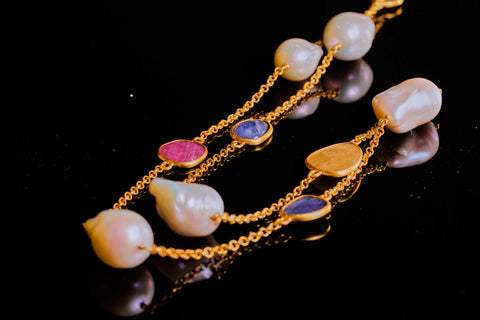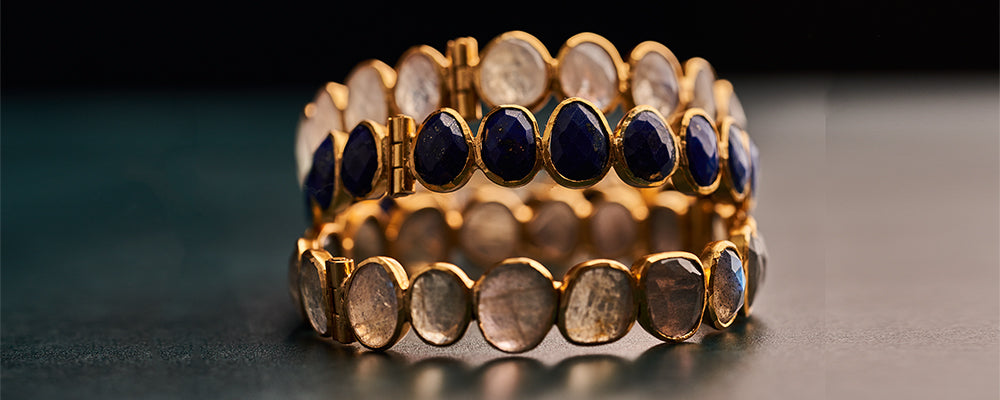Pearls: The World's Oldest Gem

Nature never ceases to amaze us. It’s capable of creating breathtaking phenomena within minutes—such as vibrant rainbows after the rains—although some of its most beautiful gifts are meticulously formed over months, years, and even centuries. These organic processes teach us patience, and the remarkable results have inspired many Manjusha Jewels’ designs.
Often referred to as the world’s oldest gem, pearls have been coveted for thousands of years, with the first recorded mention by an ancient Chinese historian in 2206 BC. The painstaking and perilous trip to the depths of the ocean to source them made pearls a luxury accessible only to the wealthiest—quickly becoming a symbol of royalty. The Ptolemaic queen, Cleopatra, and Roman general, Julius Caesar, are among the ancient nobility believed to have commanded the reservation of these nacreous wonders for the elite.

Gold, garnet, and pearl earring, Roman Period 220-250CE
Photo: The Israel Museum, Jerusalem
Due to the popularization of pearls and “overfishing” of oysters in the 18th and 19th centuries, the already rare pearl became nearly extinct. It’s no wonder humans turned to artificial methods of emulating nature.
Although the now perfected technique of cultivating pearls has its roots in methods first tested several centuries back, it was only after nearly a decade of experimentation that a Japanese entrepreneur, Mikimoto Kōkichi, succeeded in nucleating Akoya pearl oysters that the first cultured pearl was produced in 1893. His process was designed to mimic nature by manually introducing an irritant into the mollusk, triggering the defensive response of enveloping the irritant in nacre, resulting in a pearl. Deep within the sea, these irritants are often in the form of grains of sand, pieces of shell, and small parasites.
While perfectly round, white Akoya pearls are among the most popular of the iridescent gem, there has been a recent growing desire for irregularly shaped pearls. It is precisely this “flaw” that makes them so unique. These non-spherical pearls are a 2021 spring and summer jewelry trend, with Baroque pearl designs making appearances on top fashion brand runways worldwide.
Baroque—and Keshi—pearls have been a longtime favorite of Manjusha Jewels’ designer, Jyotsna “Joey” Singh and can be seen in many of her legacy and current season jewelry designs. Forever inspired by nature, her Indian culture, and her royal ancestry, Joey reinterprets classic pearl designs into everyday modern and subdued versions of her grandfather Maharaja Bhupinder Singh’s elaborate pieces—such as the Patiala Necklace he commissioned to the House of Cartier in 1928—aiming to enhance the beauty of her clients with her wearable pieces of art.

Maharaja Bhupinder Singh, 5 July 1911
Photo: National Portrait Gallery (Creative Commons License)


Manjusha Jewels Baroque Pearl Designs
Leave a comment
Comments will be approved before showing up.






